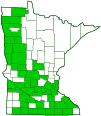Riddell’s goldenrod
(Solidago riddellii)
Conservation • Wetland • Description • Habitat • Ecology • Use • Distribution • Taxonomy
Description |
||
Riddell’s goldenrod is a 1½′ to 3½′ tall, erect, perennial forb with rising on 1 to 10 stems from a well-developed, branching caudex or, sometimes, a creeping underground stem (rhizome). The stem is erect, thick, and hairless except for some fine short hairs in the inflorescence. Basal and lower stem leaves are grass-like, long, narrow, and hairless. They are 4″ to 9½″ long, ⅓″ to ⅔″ wide. They are folded along the midrib, V-shaped in cross section, and often bent backward. They taper to a long, winged leaf stalk. They are usually withering by the time the plant is in flower. Stem leaves are alternate. Middle and upper stem leaves are attached to the stem without a stalk. They are 2″ to 2¾″ long, ⅓″ to a little less than ½″ wide, becoming gradually smaller as they ascend the stem. They are folded along the midrib and wraps around (sheaths) the stem at the base. They are not dotted with glands. The stem and side branches terminate in flower clusters which form a flat topped inflorescence of between 30 and 450 flower heads. Each flower head has 7 to 9 yellow ray florets and 6 to 10 yellow disk florets. |
||
Height |
||
1½′ to 3½′ |
||
Flower Color |
||
Yellow ray florets, yellow disk florets |
||
Similar Species |
||
Among the flat-topped goldenrods this species is identified by its grass-like, folded leaves that sheath the stem. Grass-leaved goldenrod (Euthamia graminifolia) has grass-like, unfolded leaves that do not wrap around (sheath) the stem at the base. They have tiny brown to black resinous dots on the surface. Each flower head has 15 to 25 ray florets. Great Plains flat-topped goldenrod (Euthamia gymnospermoides) has grass-like, unfolded leaves that do not wrap around (sheath) the stem at the base. They have a large number of resinous dots on the surface. The flower clusters have only 10 to 21 flower heads. There are 10 to 14 ray florets in the flower head. |
||
Habitat |
||
Wet. Meadows, swamps, fens, prairies. Limey soil. |
||
Ecology |
||
Flowering |
||
Early August to late September |
||
Pests and Diseases |
||
Early August to late September |
||
Use |
||
|
||
Distribution |
||||
|
Sources |
|||
| 6/3/2023 | ||||
Nativity |
||||
Native |
||||
Occurrence |
||||
|
||||
Taxonomy |
|||
| Kingdom | Plantae (Plants) | ||
| Subkingdom | Pteridobiotina | ||
| Phylum | Tracheophyta (Vascular Plants) | ||
| Class | Magnoliopsida (Dicots) | ||
Order |
Asterales (Sunflowers, Bellflowers, Fanflowers, and Allies) | ||
Family |
Asteraceae (Sunflowers, Daisies, Asters, and Allies) | ||
| Subfamily | Asteroideae | ||
| Supertribe | Asterodae | ||
| Tribe | Astereae (asters and allies) | ||
| Subtribe | Solidagininae | ||
| Genus | Solidago (goldenrods) | ||
| Subgenus | Pleiactila | ||
| Section | Ptarmicoidei | ||
Some taxonomist separate the seven flat-topped goldenrod species in the Solidago section Ptarmicoidei as a separate genus Oligoneuron. The Global Compositae Database lists Riddell’s goldenrod as Oligoneuron riddellii, with Solidago riddellii a synonym. The Global Compositae Checklist lists it as Solidago riddellii, with Oligoneuron riddellii a synonym. Almost all other sources list it as Solidago riddellii. |
|||
Subordinate Taxa |
|||
|
|||
Synonyms |
|||
Aster riddelli Oligoneuron riddellii Solidago amplexicaulis |
|||
Common Names |
|||
common flat-topped goldenrod lance-leaved goldenrod Riddell’s goldenrod |
|||
Glossary
Caudex
A short, thickened, woody, persistent enlargement of the stem, at or below ground level, used for water storage.
Rhizome
A horizontal, usually underground stem. It serves as a reproductive structure, producing roots below and shoots above at the nodes.
Sheath
The lower part of the leaf that surrounds the stem.
Visitor Photos |
|||||
Share your photo of this plant. |
|||||
| This button not working for you? Simply email us at info@MinnesotaSeasons.com. Attach one or more photos and, if you like, a caption. |
|||||
|
|||||
MinnesotaSeasons.com Photos |
|||||
Plant |
|||||
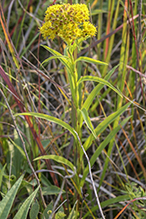 |
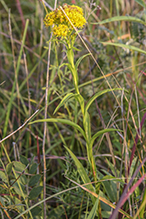 |
||||
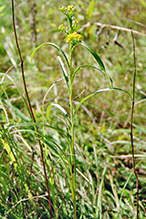 |
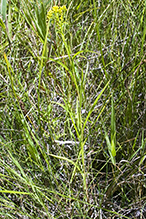 |
||||
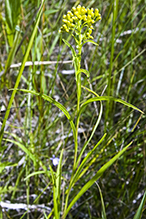 |
|||||
Inflorescence |
|||||
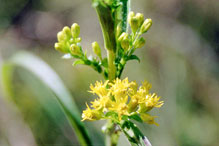 |
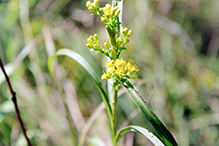 |
||||
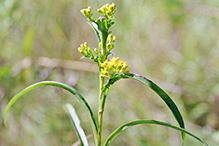 |
|||||
Northern corn rootworm beetle on Riddell's goldenrod |
|||||
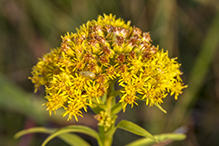 |
|||||
Leaves |
|||||
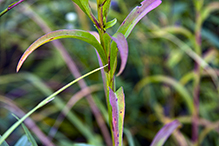 |
|||||

Slideshows |
||

Visitor Videos |
|||
Share your video of this plant. |
|||
| This button not working for you? Simply email us at info@MinnesotaSeasons.com. Attach a video, a YouTube link, or a cloud storage link. |
|||
Other Videos |
|||

Visitor Sightings |
|||||
Report a sighting of this plant. |
|||||
| This button not working for you? Simply email us at info@MinnesotaSeasons.com. Be sure to include a location. |
|||||
|
|||||
MinnesotaSeasons.com Sightings |
|||||

|
Created: Last Updated: © MinnesotaSeasons.com. All rights reserved. |
